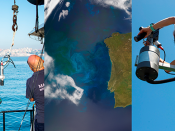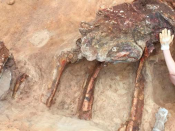Por Susana Lopes (Faculdade de Ciências Médicas, Universidade Nova de Lisboa, Portugal).
Humans and other vertebrates define body axis left-right asymmetry in the early stages of embryo development (Shiratori and Hamada, 2006). The mechanism behind left-right establishment is not fully understood (Mizuno et al., 2020; Maerker et al., 2021; Minegishi et al., 2021). Symmetry breaking occurs in a dedicated organ called the left-right organizer (LRO) and involves motile cilia generating fluid-flow therein. However, it has been a matter of debate whether the process of symmetry breaking relies on a chemosensory or a mechanosensory mechanism (Shinohara et al., 2012). Novel tailored manipulations for LRO fluid extraction in living zebrafish embryos allowed us to pinpoint a decisive developmental period for breaking left-right symmetry during development. The shortest critical time-window was narrowed to one hour and characterized by a mild counterclockwise flow. The experimental challenge consisted in emptying the LRO of its fluid, abrogating simultaneously flow force and chemical determinants. Our findings revealed an unprecedented recovery capacity of the embryo to re-fil and re-circulate new LRO fluid. The embryos that later developed laterality problems were found to be those that had lower anterior angular velocity and thus less anterior-posterior heterogeneity. Aiming to test if this led to differential endocytosis of any molecular determinant, we replaced the LRO fluid by a physiological buffer. Despite some transitory flow homogenization, laterality defects were absent unless viscosity was altered demonstrating that symmetry breaking does not depend on the nature of the fluid content but rather relies on fluid mechanics. Altogether, we conclude that mechanosensing is the likely mechanism to govern left-right early establishment.




















